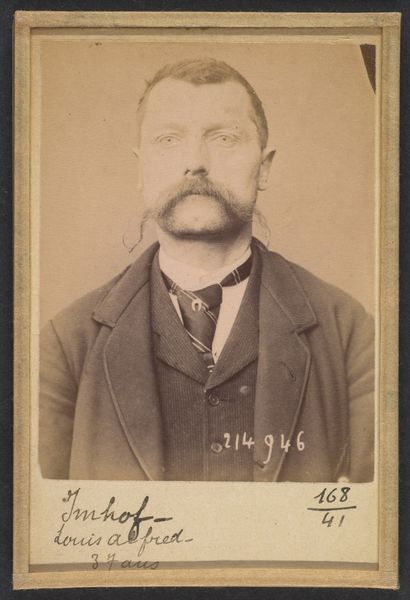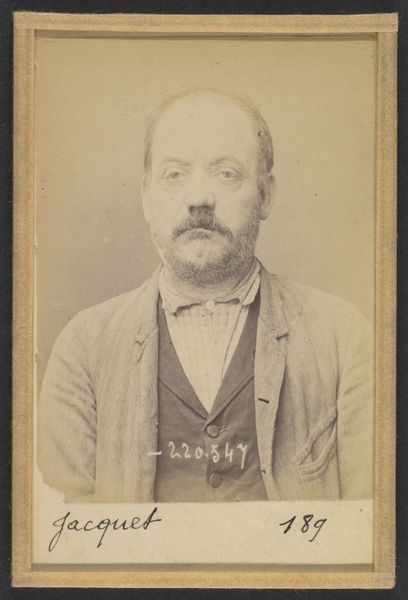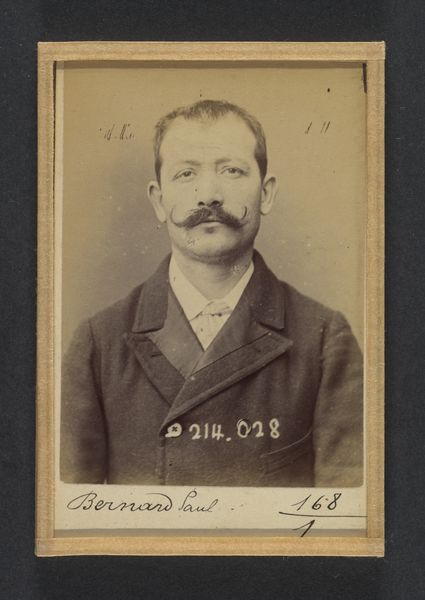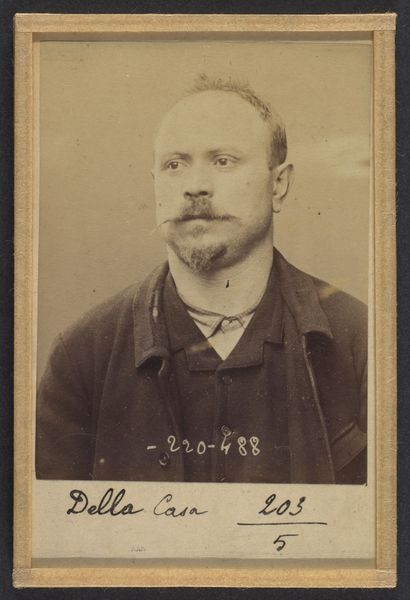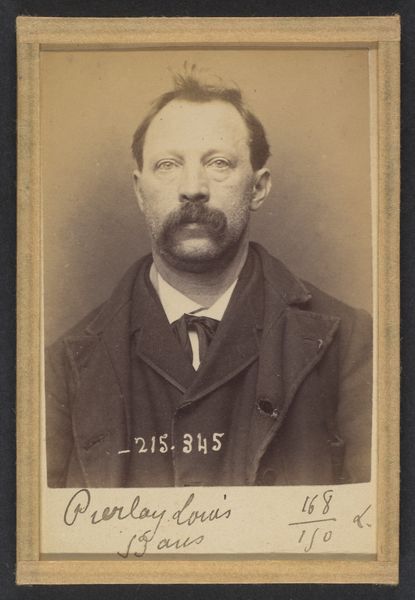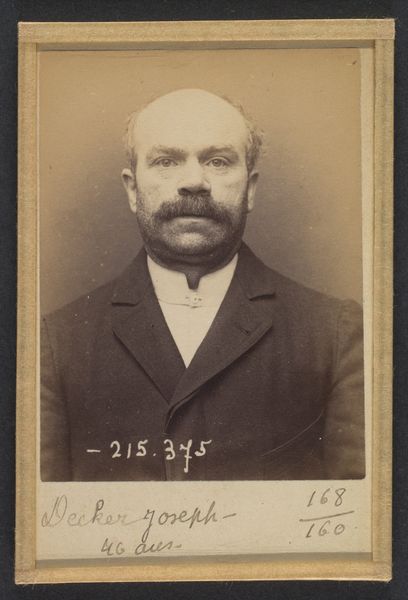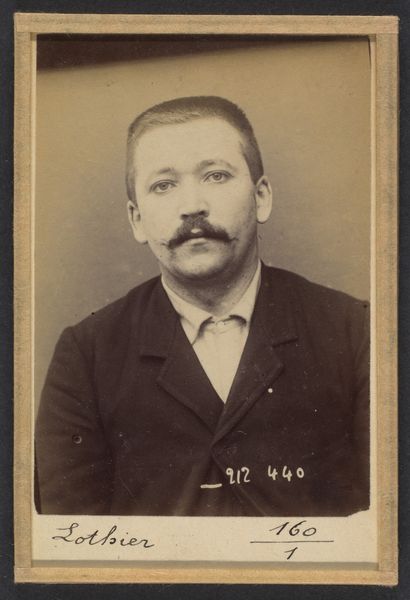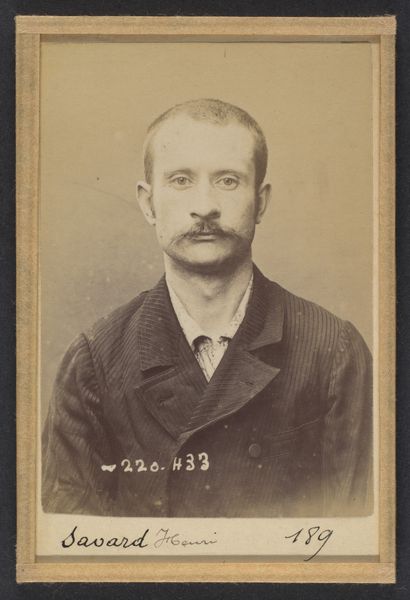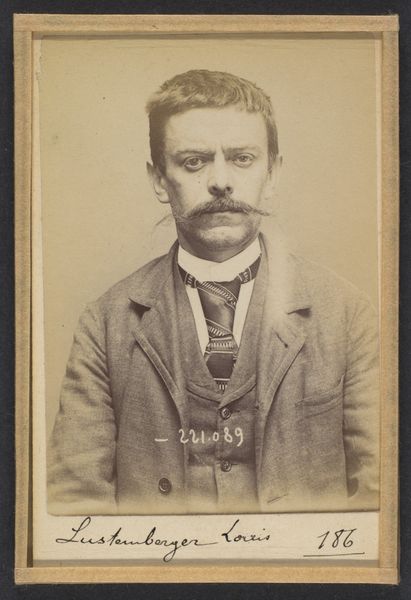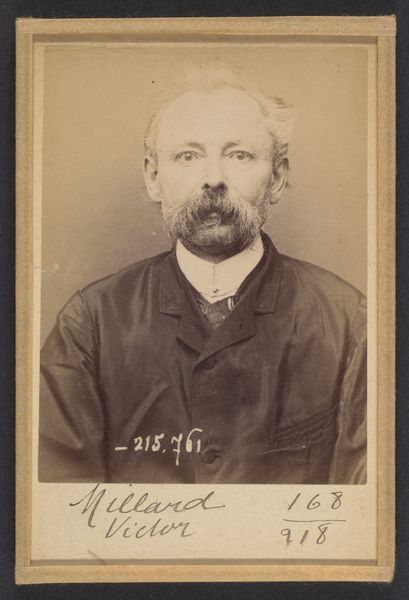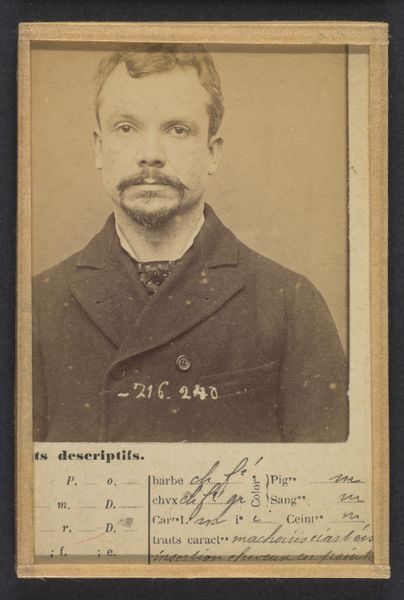
Lagane (ou Lagasse). Lucien, Pierre. 35 ans. 22/2/94. 1894
0:00
0:00
photography, gelatin-silver-print
#
portrait
#
portrait
#
photography
#
gelatin-silver-print
#
realism
Dimensions: 10.5 x 7 x 0.5 cm (4 1/8 x 2 3/4 x 3/16 in.) each
Copyright: Public Domain
Curator: Here we have a photograph titled "Lagane (ou Lagasse). Lucien, Pierre. 35 ans. 22/2/94.", created in 1894 by Alphonse Bertillon. It's a gelatin-silver print currently residing in the Metropolitan Museum of Art. Editor: Immediately, there's something about the starkness of it that’s so compelling. The neutral background really isolates the subject. The composition itself feels very direct, unadorned. Curator: Bertillon was a French criminologist who pioneered forensic photography. These photographs, these portraits, are often called "mugshots" because of their association with law enforcement. But they offer an unexpectedly potent glimpse into a specific moment in a person’s life. The subjects carry an element of forced candor that, from the perspective of the observer, creates space for empathy. Editor: You mention empathy, and I agree; there's a vulnerability in the details. Observe the gentle gradient of tones. Despite being a "realist" photograph intended for bureaucratic usage, it renders the materiality of human presence. Even the shadows add depth. Curator: The "realistic" function intended here makes it valuable to consider how far and wide similar photographs have rippled out across the twentieth and twenty-first centuries. We have inherited ways of seeing the world and categorizing individuals from innovations that arose out of criminal profiling, and now flood the fields of political imaging and media consumption. Editor: But the subject seems unaware that this single frame will one day take on an expanded legacy as social critique. In fact, the lack of dramatic posing contributes to the photograph’s unsettling quality, amplifying both detachment and vulnerability. Curator: His gaze meets the camera directly, yet we sense a disjunction. The mustache and tie read as elements of pride. Meanwhile, his name and numerical code are hastily scribbled in the border. The visual and textual blend creates a complex story about identity and objectification. Editor: Yes, and how are we, as viewers in the present, complicit in this historical practice? Curator: Exactly. Ultimately, Bertillon’s photographs reveal the cultural anxiety surrounding identity, permanence, and representation. The photograph then serves as a record and an invitation for viewers to interrogate the gaze, and reflect on what they expect when facing an image from a past era. Editor: Considering how this piece invites inquiry into its very construction and context has certainly amplified my original reading. I’m going to look at those gradients a bit differently now.
Comments
No comments
Be the first to comment and join the conversation on the ultimate creative platform.

